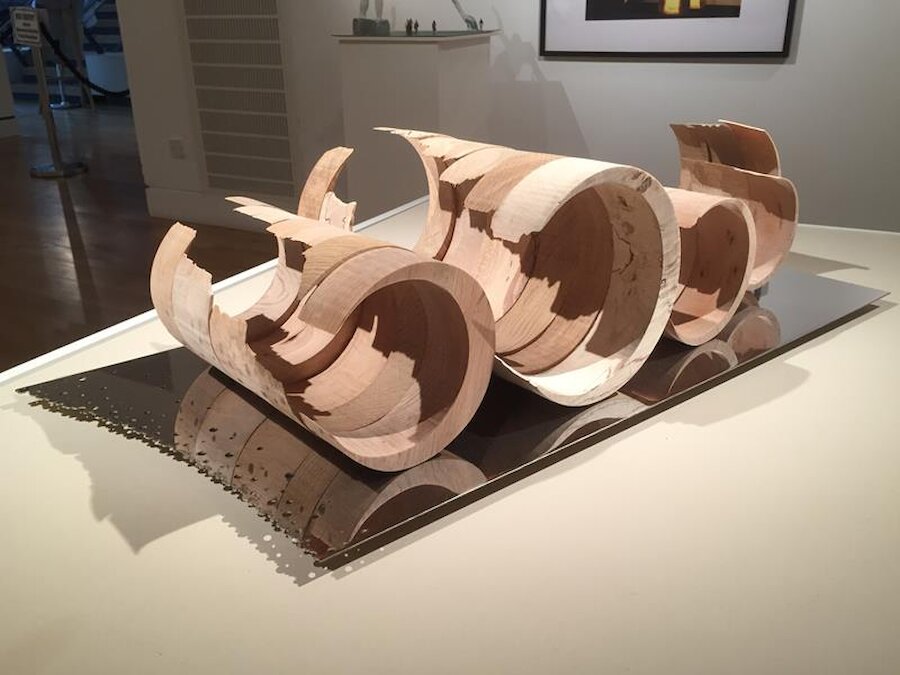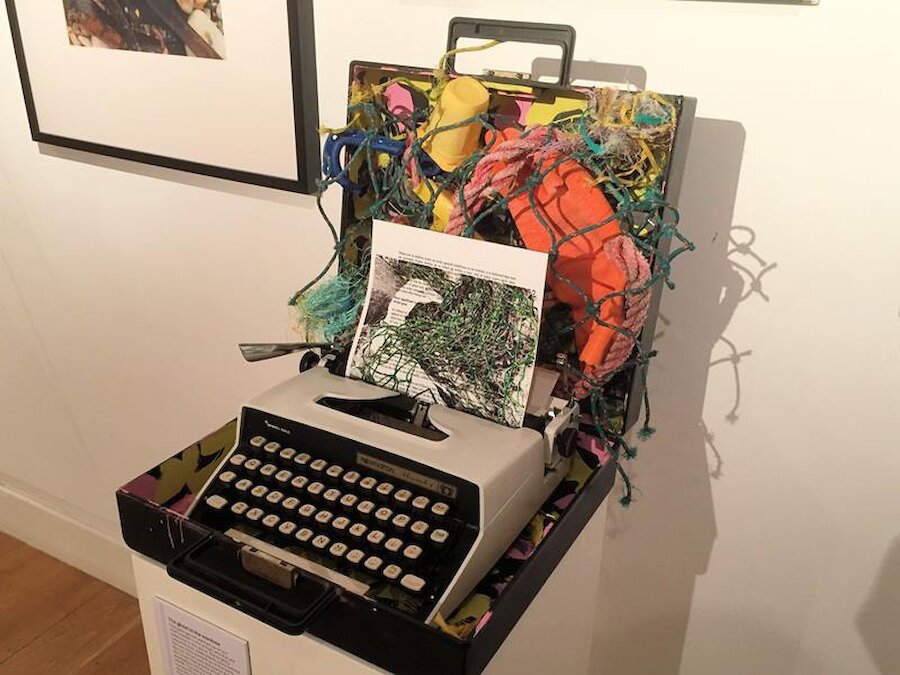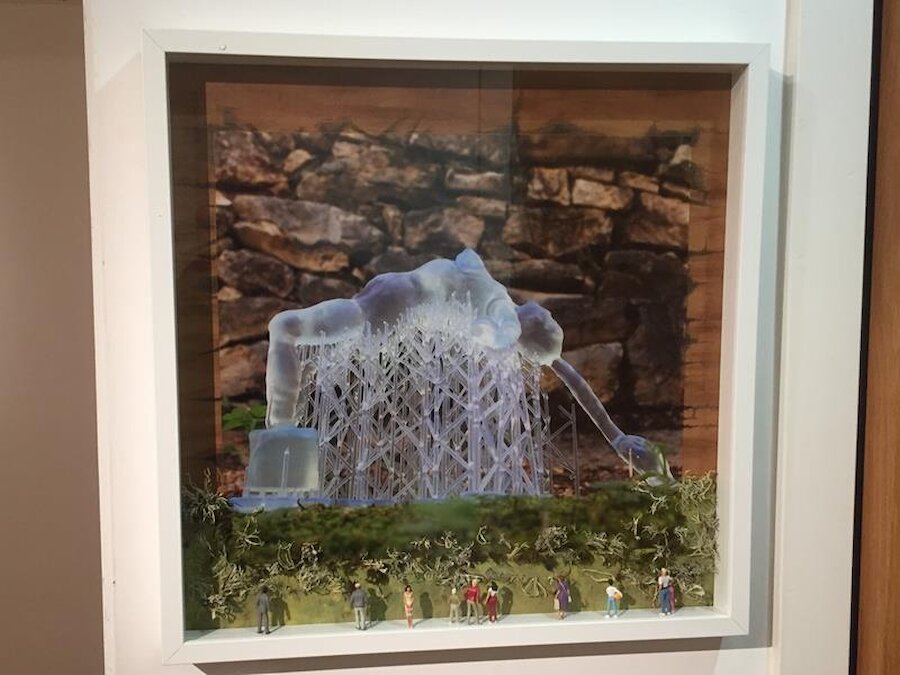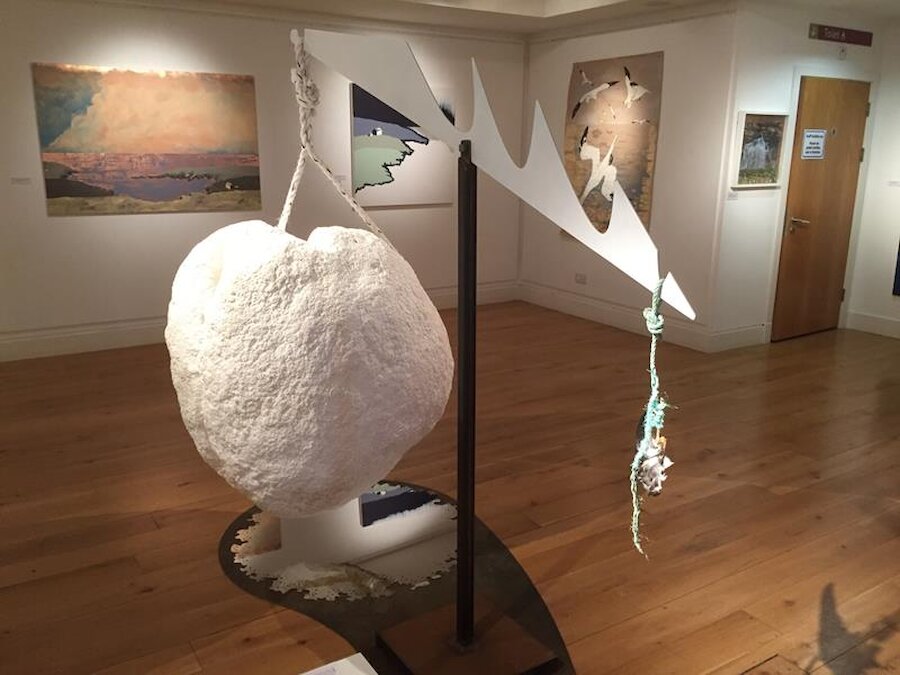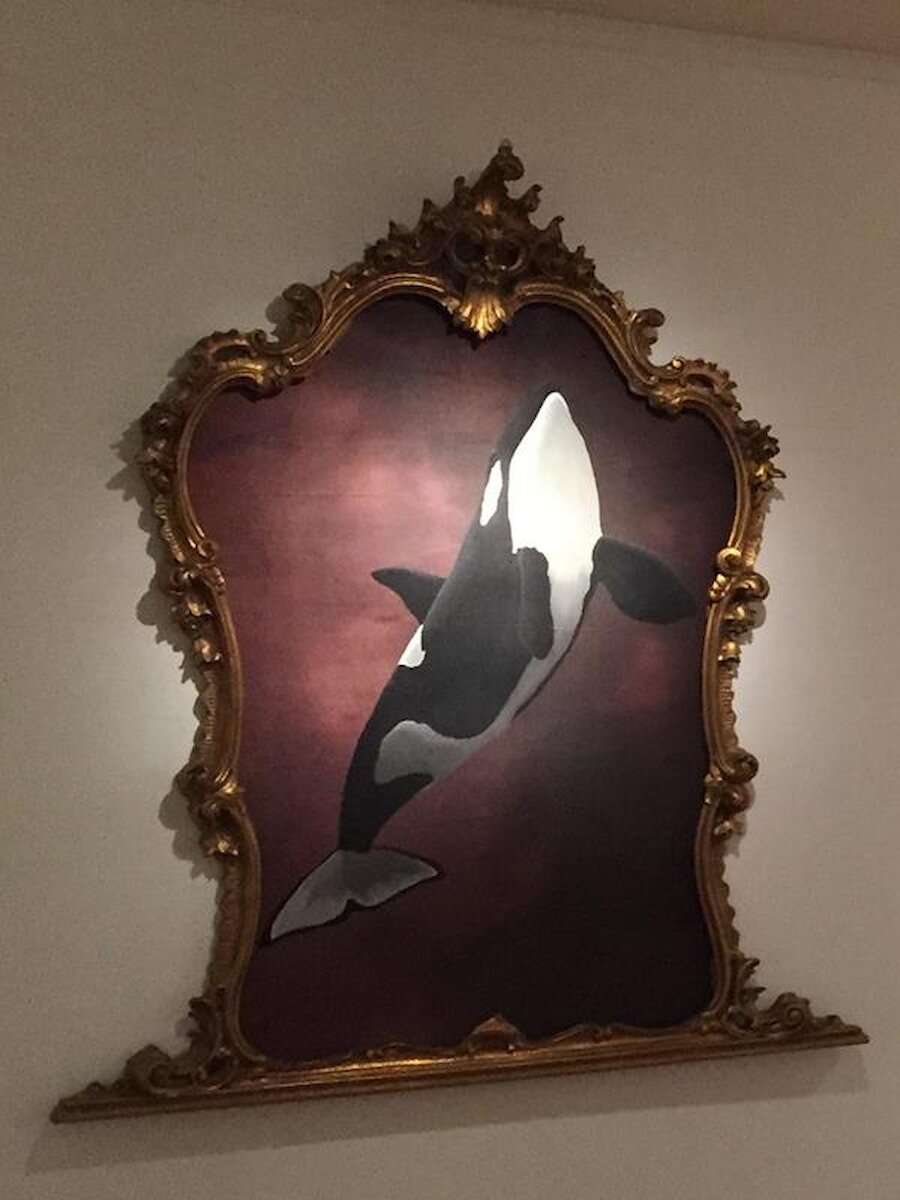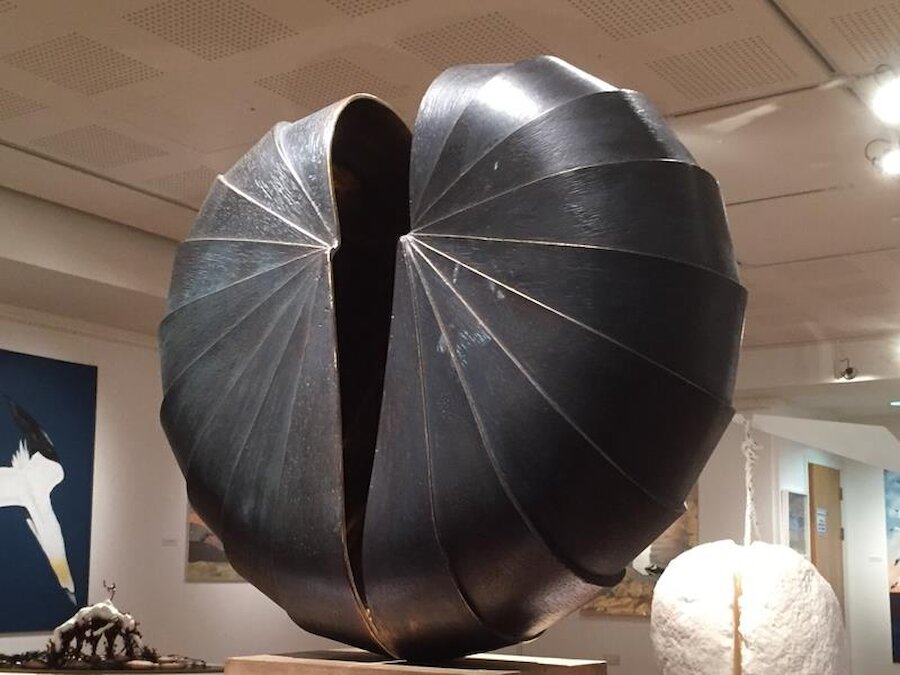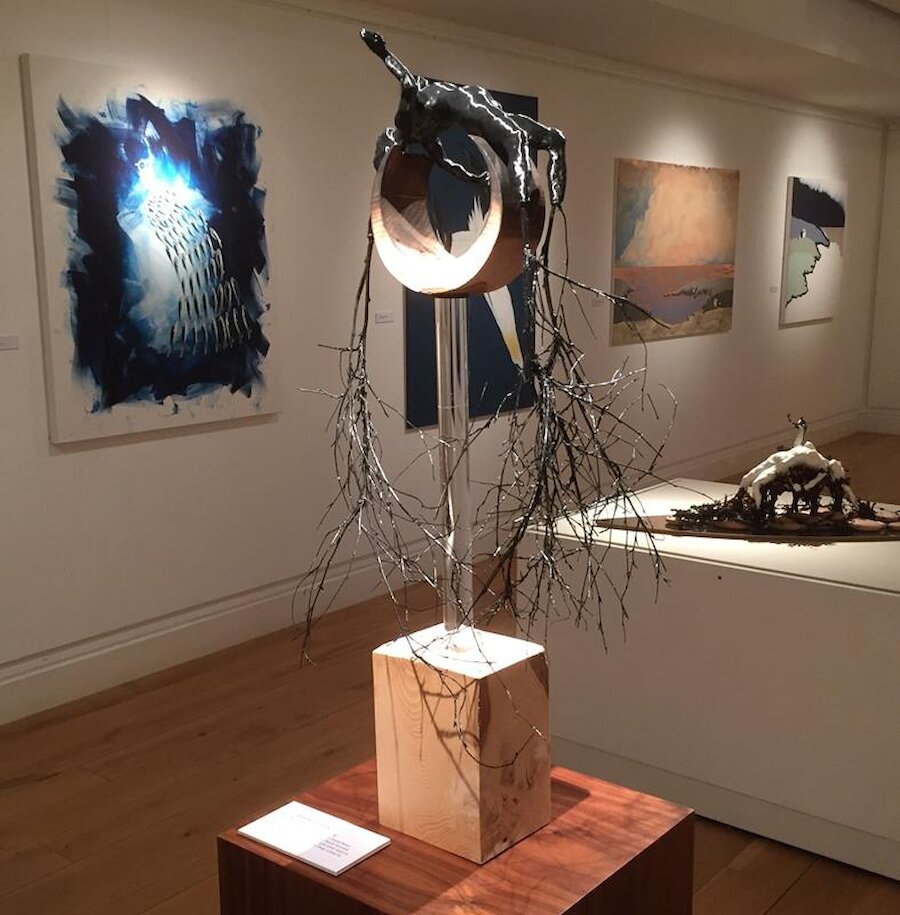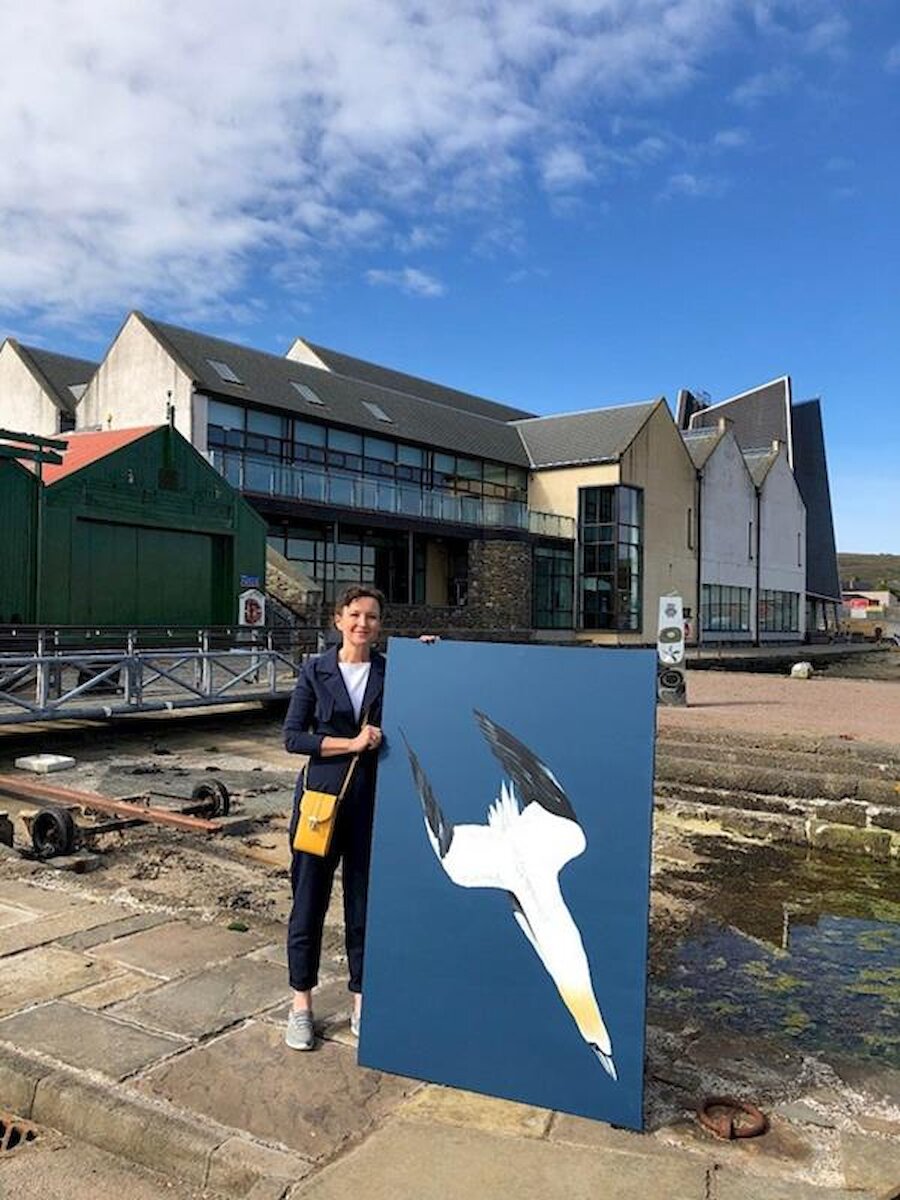The new exhibition embraces painting, sculpture and photography, but that bald statement doesn’t begin to convey the variety of means by which she accomplishes her aims. There are remarkable conjunctions of styles and materials, always created with panache and confidence, on a spectrum that extends from the representational to the abstract.
The latest exhibition in Da Gadderie – the gallery space at the Shetland Museum and Archives – features more than 40 pieces by Roberta Fulford, an artist who moved to Shetland eight years ago and – like many others – is inspired by the islands’ natural environment.
Roberta is a full-time artist and sculptor; she works in a wide variety of materials and techniques, from the more traditional - clay, paint, wood, bronze and steel – to the most recent, 3D printing. Again, though, this isn’t just steel: it’s laser-cut and finely polished stainless steel, as in the example above.
She often incorporates found materials in her work, and there are several examples in this exhibition, including Ghost In The Machine, which recalls the entangled gannet that washed up on a nearby beach. The piece is intended to convey “the need for reportage, care and education to try to reduce the losses of these beautiful creatures”.
She studied art and design at Manchester Metropolitan University and graduated from Northumbria University with a first-class honours degree in three-dimensional design. Until a few years ago, she worked in interior architecture, designing commercial spaces throughout the UK and creating artwork and furniture to complement them.
But much of her inspiration these days comes from the natural environment that surrounds her croft at Skaw, Whalsay. She chronicles human impacts on that environment, perhaps most strikingly in the exhibit which features an extraordinarily large piece of flotsam – the remains of a polystyrene buoy – and a fulmar’s wing. The balance from which they’re suspended echoes the form of a whaling harpoon.
This, then, is bold work, in conception and execution. Another of the large-scale exhibits is the remarkable insect chair, constructed with the help of local engineering firm, LEF, which is based on a much smaller prototype that Roberta created while studying. Here, there’s another of those unexpected encounters between materials, in this case steel and velvet.
Gannets feature strongly in several pieces and Roberta is clearly fascinated by their speed and precision as they plunge into the waters close to her home. These are strikingly dynamic images, created in a range of media including metal leaf.
There is even an abstract composition which seeks to convey the same impression, built using string and nails hammered directly into the gallery’s walls.
An Orca features, too, the simplicity and power of the animal’s form contrasting with a decidedly baroque frame; those sorts of surprising juxtapositions are clearly something that Roberta enjoys. The blood-red background hints, too, at human impacts on these magnificent creatures.
Roberta said: “The title of the exhibition is inspired by Virginia Woolf's words 'I am rooted, but I flow', which speaks to me of settling in Shetland but evolving and growing with the on-going experience of living among its beauty. My work also heavily features water, wildlife and wilderness.”
She sees the work she’s done over the past 18 months – a challenging time for all of us – as a return to her artistic roots. She’s now “really excited” to be able to show these recent pieces. “I hope that my paintings and sculpture reflect the awe I feel of living in such a beautiful wild place, and will encourage others to take a different look at the natural world around them.”
Shetland Museum Curator Dr Ian Tait said: “The technical prowess and creative range of techniques in this show are something to behold. Many people are inspired by the natural world, but extremely few have the prodigious talent of Roberta. Visitors will enjoy the intellectual process of “reading” the work, as much as seeing the pieces themselves.”
And it’s clear from the early reaction in the visitors’ book that that prediction is right.
The show runs through until August 2021. If you aren’t able to see this fascinating exhibition in Shetland, there will be opportunities to see Roberta’s work later this year in Edinburgh, at The Whitehouse Gallery (from October) and The Dundas Street Gallery, from December.


